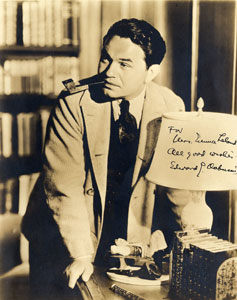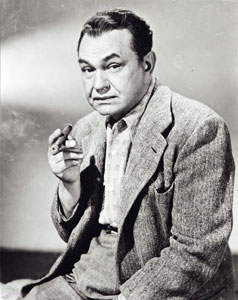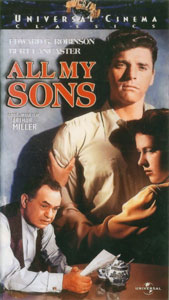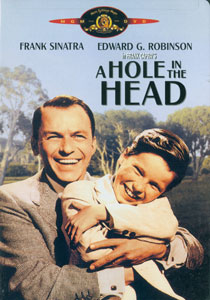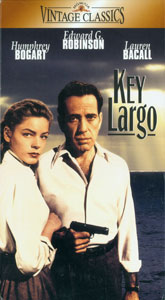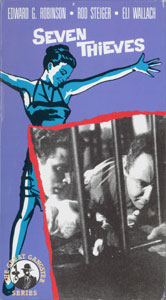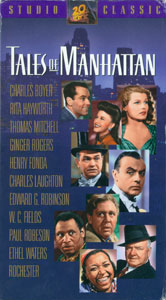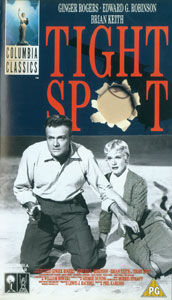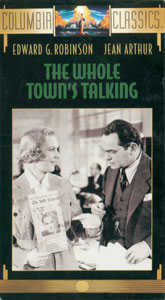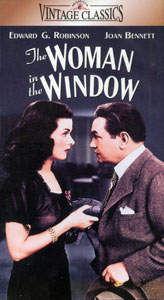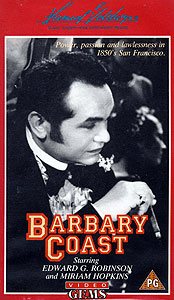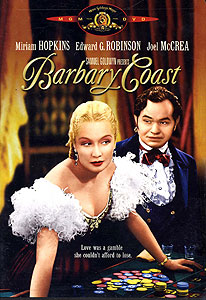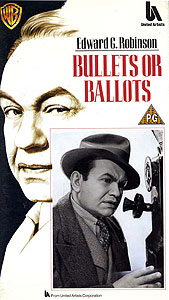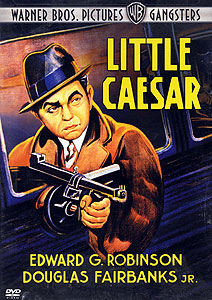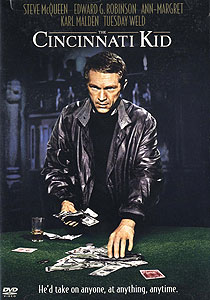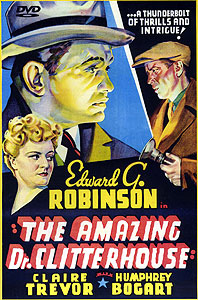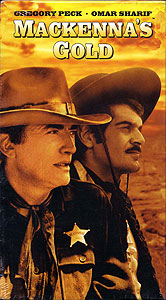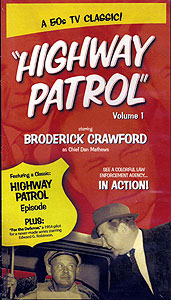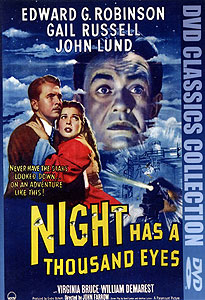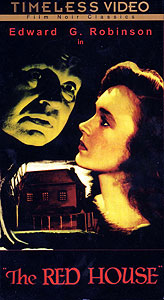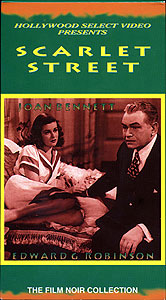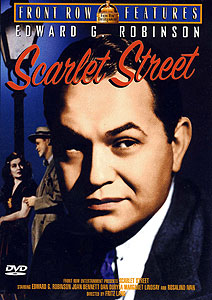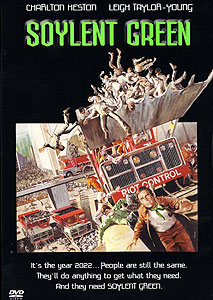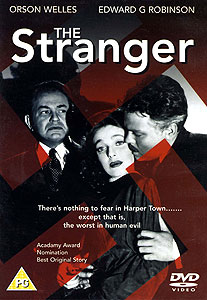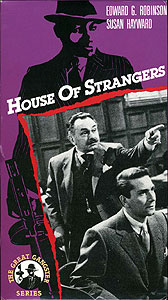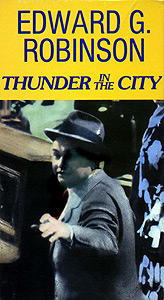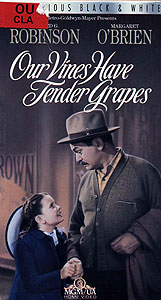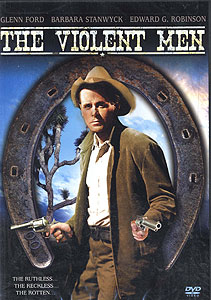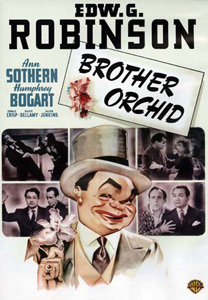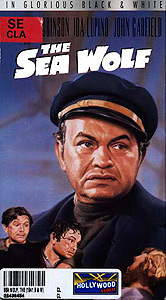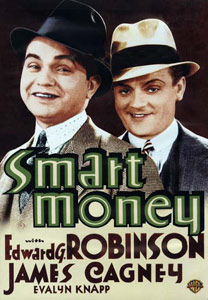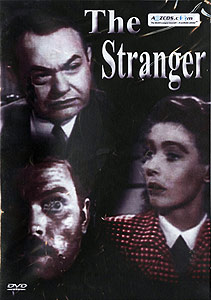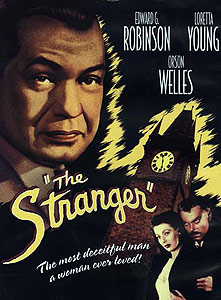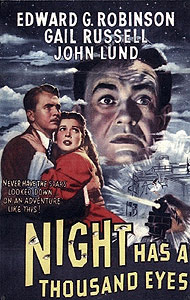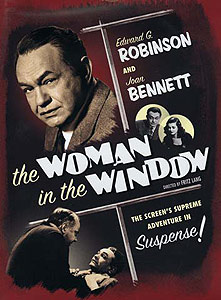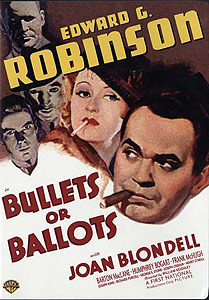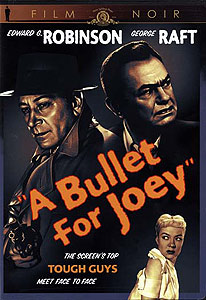Edward G. Robinson Real name: Emmanuel Goldenberg 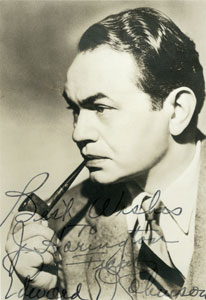 A signed photograph of Edward G Robinson, which is owned by the Foundation Born to a Yiddish-speaking Jewish family in Bucharest, he emigrated with his family to New York City in 1903. He had his Bar Mitzvah at First Roumanian-American congregation, and attended Townsend Harris High School and then City College of New York. An interest in acting led to him winning an American Academy of Dramatic Arts scholarship, after which he changed his name to Edward G. Robinson (the G. signifying his original last name). An acclaimed performance as the gangster Rico Bandello in Little Caesar (1931) led to him being typecast as a 'tough guy' for much of his early career in works such as Five Star Final (1931), Smart Money (1931; his only movie with James Cagney), Tiger Shark (1932), Kid Galahad (1937) with Bette Davis and Humphrey Bogart, and A Slight Case of Murder and The Amazing Dr. Clitterhouse (1938). In the 1940s, after a good performance in Dr. Ehrlich's Magic Bullet (1940), he expanded into edgy psychological dramas including Double Indemnity (1944), The Woman in the Window (1945) and Scarlet Street (1945); but he continued to portray gangsters such as Johnny Rocco in John Huston's classic Key Largo (1948), the last of five films he made with Humphrey Bogart. 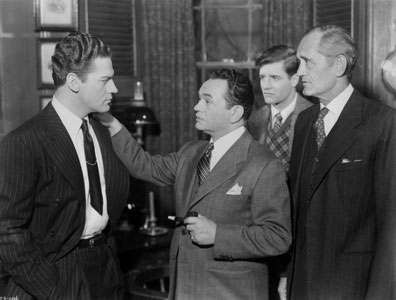 'The Stranger' 'The Stranger'On three occasions in 1950 and 1952 he was called to testify in front of the House Un-American Activities Committee and was threatened with blacklisting. Robinson became frightened and took steps to clear his name, such as having a representative go through his check stubs to ensure that none had been issued to subversive organizations.[5] He reluctantly gave names of communist sympathizers and his own name was cleared, but thereafter he received smaller and less frequent roles. Still, anti-communist director Cecil B. DeMille cast him in The Ten Commandments in 1956.  SPOT NEWS ON THE WIRE - Edward G. Robinson, as editor of a fighting newspaper, with Laraine Day as his efficient secretary, in "The New York Story", Metro-Goldwyn-Mayer drama, with Edward G. Robinson and William Orr. Mervyn LeRoy directed, Sam Marx produced. After DeMille brought Robinson back into movies, his most notable roles were in A Hole in the Head (1959) opposite Frank Sinatra and The Cincinnati Kid (1965), which showcased Robinson alongside Steve McQueen. Director Peter Bogdanovich was considered as a possible director for The Godfather in 1972, but turned it down, later remarking that he would have cast Robinson in the role ultimately played by Marlon Brando. Robinson indeed tried to talk his way into the part (which was how he had won the role of Little Caesar 40 years earlier), but Francis Coppola decided on Brando instead, over the initial objections of the studio. Robinson was never nominated for an Academy Award, but in 1973 he was awarded an honorary Oscar in recognition that he had "achieved greatness as a player, a patron of the arts, and a dedicated citizen ... in sum, a Renaissance man". He died from cancer at the age of 79, two months before the award ceremony.
Link to Edward G. Robinson Filmography (IMDb) The Foundation has collected viewing copies of most of Robinson’s many films: Films
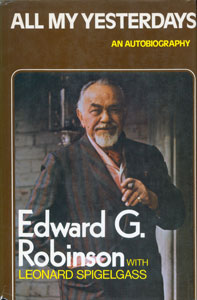 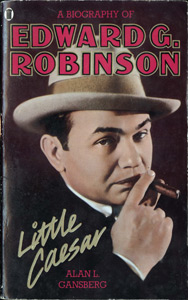 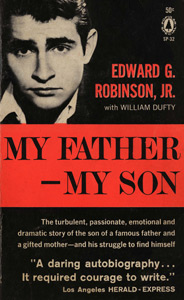 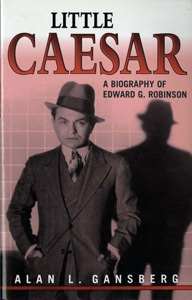 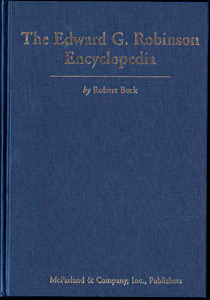 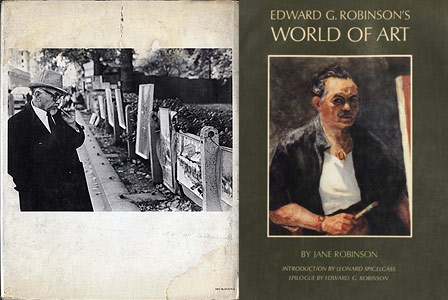 |
||||
 |
|
||
|
|||
